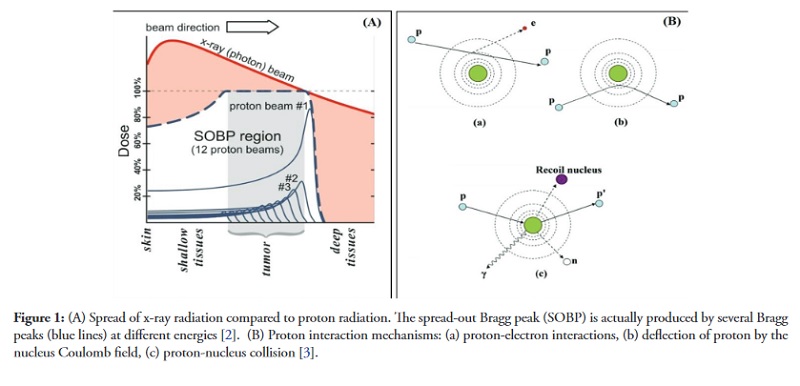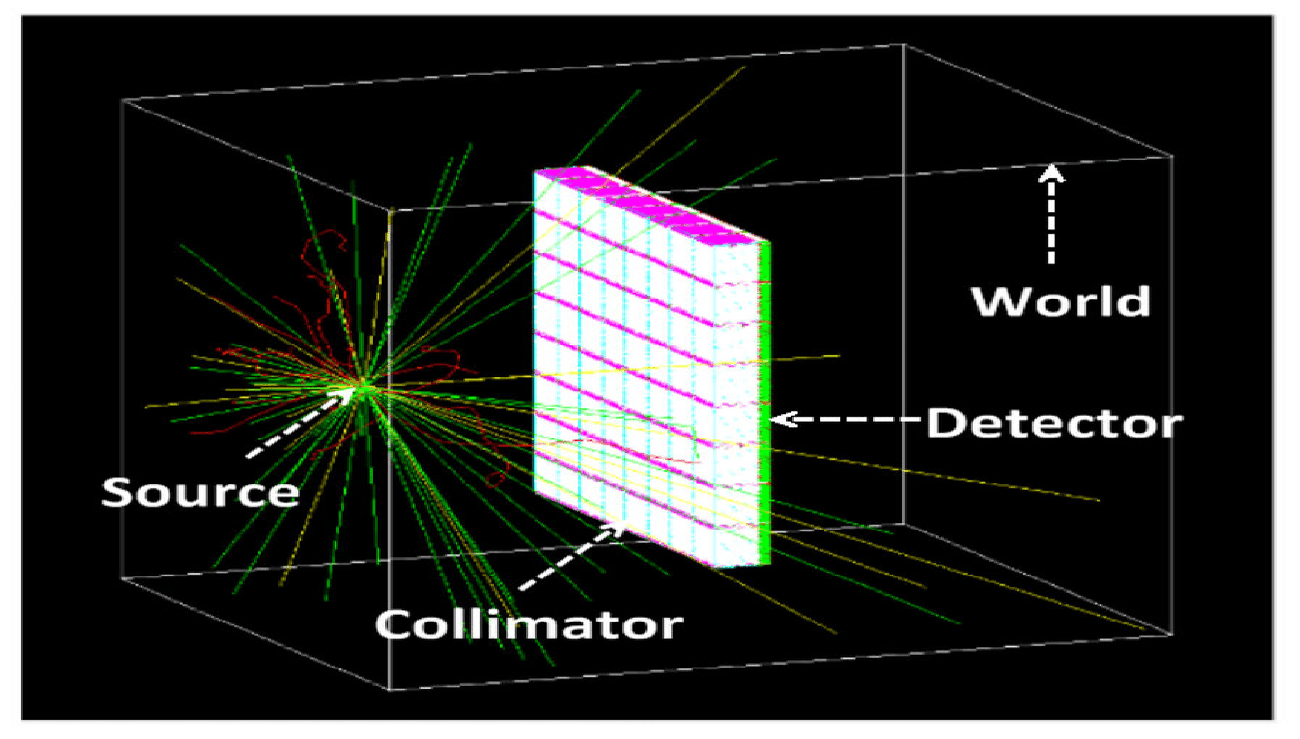
Proton Therapy To Destroy Cancer Cells
In this article a proton beam is used to study the effect of it on cancer cells. Proton therapy uses a beam of protons to destroy cancer cells. A problem of the method is the determination of what part of the body the protons are hitting during the irradiation.
Proton Therapy Abstract
In a previous study we determine that by capturing the gamma rays produced during the irradiation one can determine the location of the proton-body interaction, in this work we investigate if by examining the gamma rays produced it is possible to determine the body part that produced the gamma rays by the proton collision. This study uses GEANT4 computer simulations of interactions of proton-tissue, proton brain, proton-bone, etc., which produce gamma rays, to determine the characteristics of the gamma rays produced. We then analyze the characteristics of the gamma rays to find signatures that could be used to determine the source of the rays. In particular, we study the distribution of gamma ray energies, their full-width half-maximum, energy resolution, maximum height, and total number of counts. This study concludes that it is possible to use the gamma ray spectra to determine what body part produced it.
Introduction Proton Therapy
Proton therapy uses a beam of protons to irradiate diseased tissue. An advantage of proton therapy over other types of treatments is the ability of the protons to deposit energy in a narrow range minimizing irradiation to healthy cells. Calibrating the proton energy allows to deposit energy in a certain range known as the Bragg peak [1]. Typically, proton beams have energies in the range of 70 to 250 MeV [4].
In spite of this, it is impossible to know where exactly is the proton hitting. If information about the location of the target being hit by the proton beam were available, one could then fine-tune the beam energy during the irradiation for a better focus. As explained in [5, 6], it is conceivable to use the gamma rays produced during the proton-target interaction to determine the location of the proton-tissue interaction and, as an extension, it may also be possible to determine the type of target being hit by looking at the characteristics of the gamma rays being produced. This is the ultimate goal of this study, namely, to determine the type of target being irradiated by inspecting the gamma rays produced.
The gamma ray produced in proton-nucleus collisions are expected to be more or less intense depending on the density of the body being irradiated. The intensity of the gamma rays produced in different parts of the body is then expected to vary, and thus could be used as a signal to identify the organ being irradiated. The specific goal of this work is to characterize the gamma rays produced by the different body parts when irradiated by a proton beam.Here we use the package Geant4 to simulate the proton-body interactions, and by varying the parameters of the simulation (beam energy, geometry, body part, etc.) thousands of simulations will produce gamma rays with varying energies and intensity. These characteristics of the gamma rays produced will be used to try to distinguish among the various targets.This work is born in support to the project of Arizona State University [7] to develop an out-of-the-body gamma ray detectors that can help determine the location of the proton-tissue interactions during proton therapy. Next we discuss the interactions of protons with body parts and the production of gamma rays, the setup of the GEANT4 simulation, the analysis of the gammas produced, and the result of the simulations.
References
[1] K.A. Camphausen and R.C. Lawrence, Cancer Management: A Multidisciplinary Approach. In: Principles of Radiation Therapy, edited by R. Pazdur, L.D. Wagman, K.A. Camphausen and W.J. Hoskins, 11th ed., Cmp. United Business Media, 2009.
[2] W.P. Levin, H. Kooy, J.S. Loeffler and T.F. DeLaney, British Journal of Cancer 93, 849 (2005). https://doi.org/10.1038/sj.bjc.6602754
[3] W.D. Newhauser and R. Zhang, Phys. Med. Biol. 60, R155 (2015). https://doi.org/10.1088/0031-9155/60/8/R155
[4] J. Metz, Differences between protons and X-rays. Abramson Cancer Center of the University of Pennsylvania, 2006. Retrieved on February 04, 2018 from http://www.oncolink.org/treatment/article.cfm?c=9&s=70&id=210.
[5] J.A. López, S.S. Romero González, O. Hernández Rodríguez, J. Holmes and R. Alarcón, Journal of Nuclear Physics Material Sciences Radiation and Applications 7, 217 (2020).https://doi.org/10.15415/jnp.2020.72028
[6] S.S. Romero Gonzalez, M.S. Thesis, University of Texas at El Paso, 2018. Retrieved on September 14, 2020 from https://scholarworks.utep.edu/dissertations/AAI10822888/.
[7] R. Alarcon, D. Blyth, E. Galyaev, J. Holmes, L. Ice, G. Randall, M. Bues and M. Fatyga, Int. J. Modern Physics: Conference Series 44, 1660217 (2016). https://doi.org/10.1142/S2010194516602179.



This kind of nuclear applications for the mankind are really useful.